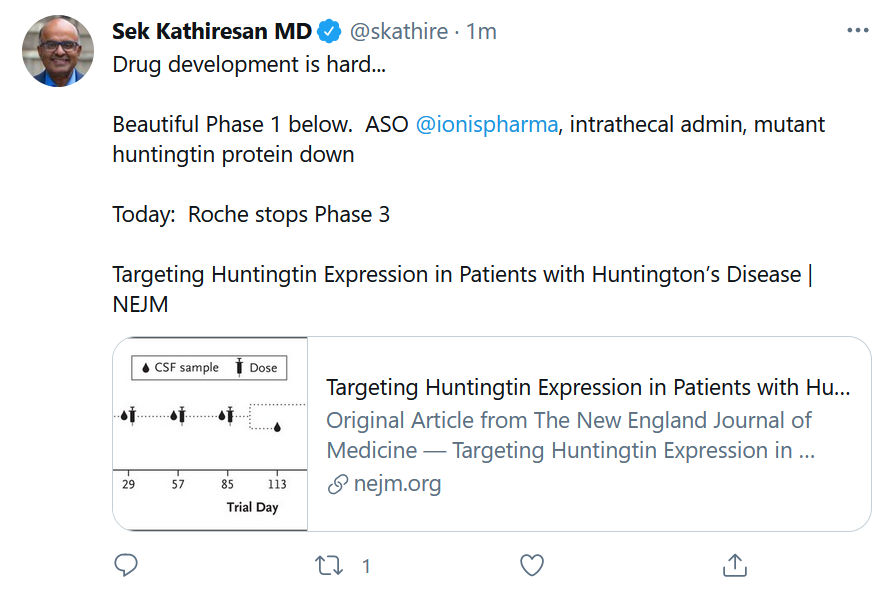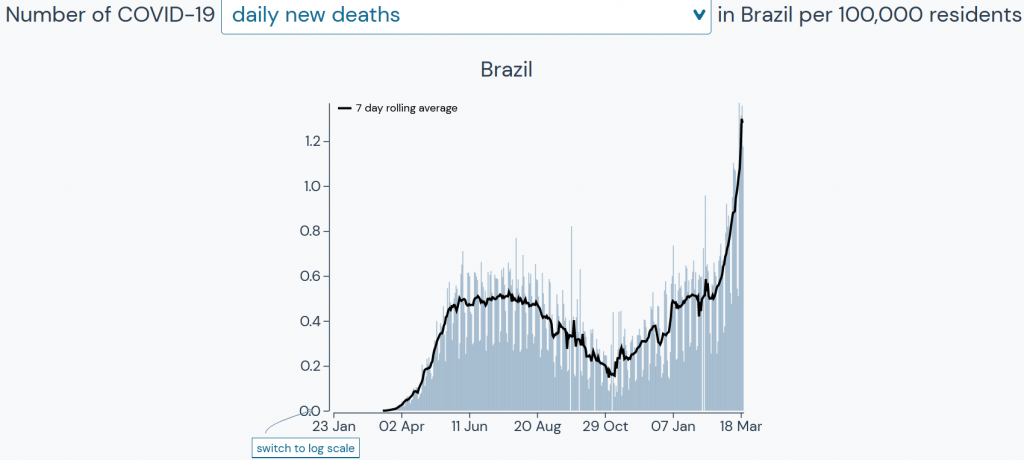Get In-depth Biotech Coverage with Timmerman Report.
5
Apr
2021
COVID-19 Testing: Going to the Dogs?

Mara Aspinall, managing director, BlueStone Venture Partners; professor of the practice, biomedical diagnostics, Arizona State University.
For at least the 15,000 years since the first-known burial of two humans with their dog, dogs and humans have cooperated intimately. Dogs get food and shelter in exchange for performing work they can do uniquely well.
Working dogs use capabilities, such as strength, speed, alertness and willingness to please (trainability).
From the very beginning, it is likely that it has been the dog’s uniquely sensitive sense of smell that is the superpower that fed the relationship, in which dogs help humans by tracking prey, avoiding threats and being willing and able to learn any new smell-related task.
Estimates are that dogs can detect one particle in 1,012 to 1,015. That is equivalent to detecting a single drop diluted into 13 million gallons of water (i.e. 20 Olympic size swimming pools).

Genie Joseph, dog trainer, Emmy-Award winning filmmaker and Executive Director of The Human-Animal Connection
Dogs achieve this exquisitely sensitive sense of smell with only one-third more smell receptors than humans. The big difference is that evolution has tuned every part of their nervous system and their brains to enable a sense of smell that is up to 1 million times better than humans.
Dog stories are always popular — especially with dog owners! — and several scientific papers from the past year examined whether dogs might be able to help detect COVID-19.
Using dogs in scent detection work is not new. They are used at airports to detect contraband and foods not allowed entry. They are used in prisons to find drugs, cell phones and stashes of cash. They are used by law enforcement to detect drugs, in search and rescue missions, and by the military to find bombs and landmines.
Airports are a logical place to start with dogs attempting to sniff whether a human has COVID-19. A government-sponsored test program at Finland’s Helsinki-Vantaa Airport had dogs examine 4,000 sweat samples on cloth. This way, no direct dog/human contact was required, posing no risk of transmission to the dogs.
When the dogs called out a potential positive case, the passenger was taken to the health office for a follow-up PCR confirmation test.
Officials at the Beirut airport designed a similar experiment. They used the two best of 18 trained dogs to screen 1,680 passengers. Of that cohort, 158 positive cases were found – and 92% of those positive cases were confirmed as positive by PCR.
Negative results were 100% accurate (unpublished results).
“This is very accurate, feasible, cheap, and reproducible,” says Riad Sarkis, a surgeon and researcher at Saint Joseph University in Beirut quoted in a Nature commentary.
Intriguing as the results are, they shouldn’t come as a surprise.
There is a long recent history of reports of canine abilities in diagnosing human cancers, including lung and ovarian cancers and melanoma; as well as clostridium difficile intestinal infection, among others.
Medical alert dogs can anticipate seizures, high or low blood sugar, and perform many other life-saving functions in a companion role. There are many advantages to asking dogs to serve us in this way. Dogs can survey large numbers of people over large areas, results are immediately available and, in a high traffic location such as an airport, one dog can perform hundreds of “tests” per hour.
They don’t cost much either – a little food, water and human companionship can go a long way in a day’s work.
What is it that dogs are actually detecting through smell? The human body is a biological “factory” that changes its internal operations in the presence of disease. These operations emit a dynamic mixture of about 1,000 separate volatile organic compounds (VOCs) in breath, sputum, saliva, feces, urine and in sweat, the chemical composition of which reflects the changed metabolism of cells infected by virus combined with the immune system’s attempts to eradicate it. These volatile organic compounds are what alert the dog to something being amiss.
The biggest differences dogs can detect are between healthy and infected individuals. The specific nature of the infection they’re detecting is less clear to us – they can’t deliver to us a distinct bark for COVID vs. HIV, for instance.
None of the scientific research published to date tries to tease out this cross-reactivity, only asking dogs to distinguish COVID-19 samples from healthy controls. It will be essential to explore how disease-specific canine discrimination is before adopting it as an official COVID-19 identification technique.
Unfortunately, and in spite of strong but intermittent interest by the medical community, there are only small pilot studies and anecdotes because very few scale, controlled studies have been funded and performed. Careful experimental design would be required, but it’s conceivable that a large study could tell us whether dogs can specifically detect a COVID-19 signal in an otherwise “noisy” environment of other potential co-morbidities.
Scientists have a long history of thinking about canine smell. The first scientific paper on canine scent capabilities appeared in Nature in 1887. Since then, interest has ebbed and flowed, but no serious systematic investigation of canine capabilities in medicine has been carried out.
In January, 2021 a brief meta-study found only three original peer-reviewed research papers: Grandjean et al; Jendrny et al; Vesga et al; plus a plan for future research by Robert Jones and colleagues at the London School of Hygiene & Tropical Medicine. All three of these are small proof-of-concept pilot studies, with similar COVID versus healthy controls trial design.
Even in this limited context, however, these studies show promise.
They uniformly concur that dogs are almost as accurate as conventional RTqPCR and about equal to the best antigen tests for COVID-19.
To review:
- Paula Jendrny and colleagues at University of Veterinary Medicine Hannover in Germany selected eight previously trained detection dogs and spent one week training them with saliva and sputum from positive and negative individuals. (Watch this 37-second video of the dogs in action). Some dogs were better than others. The all-out champion was a 12-year-old retired explosives female who was correct in 96% of 115 trials. Overall, all eight together correctly identified 157 of 190 true positives and 792 of 822 true negatives for a sensitivity of 83% and specificity of 96%. In other words, positives were 84% correct (Positive Predictive Value — PPV) and negatives were 96% correct (Negative Predictive Value–NPV). This is not RTqPCR territory in terms of gold-standard accuracy, but it’s well-within the range of accuracy we see with single-use antigen tests. It is likely that volatile organic compounds (VOC) generation is correlated with viral load and infectivity so, in a small feasibility study like this, we cannot know how many of the false positives were pre-symptomatic or asymptomatic true positives, nor to what extent reported false negatives were caused by later post-infection patients who were no longer contagious.
- Omar Vesga and colleagues at Hospital Universitario San Vicente Fundación in Medellín, Colombia selected six non-working dogs of three different breeds and trained them for a longer time period – 49 days in all. The testing set up was less automated, but the results were consistent with but even better than achieved by Jendrny: 95% sensitivity; 100% specificity; 86% PPV; and 100% NPV.
- Dominique Grandjean and colleagues at the national veterinary school at the University of Paris studied auxiliary sweat (armpit) carried out in three separate locations with eight experienced search and rescue or explosive detection dogs. Reported accuracy was high: Four of the eight dogs made no errors in 176 trials, and the others were correct in 83-94% of 192 trials. Interestingly, two of the seemingly “false” positives were referred back to the patients’ hospitals and were found to be positive on RTqPCR re-testing.
Since the dawn of the scientific age, humans have discounted canine help with tasks connected to clinical diagnosis. Our new tools of the molecular biology age must be vastly superior to a dog’s scent, right?
In certain cases, yes.
Then again, seeing results like those above begs a question — why, after 134 years of interest and investigation, has essentially no progress been made on systematically using dogs to help us detect disease?
It is broadly acknowledged that dogs accurately sense human distress and disease, even the changes of scent that distinguish stress from an innate inflammatory response. But can they be trained to detect the very subtle differences between human pathologies, and can they do it sufficiently consistently, repeatedly and accurately?
Can they do this with COVID-19?
Increasingly, the answer appears to be “yes.” Dogs are already patrolling high-traffic public spaces today. Adding COVID-19 testing to their work would be a highly cost-effective and practical solution that could allow a return to some degree of normalcy.

























